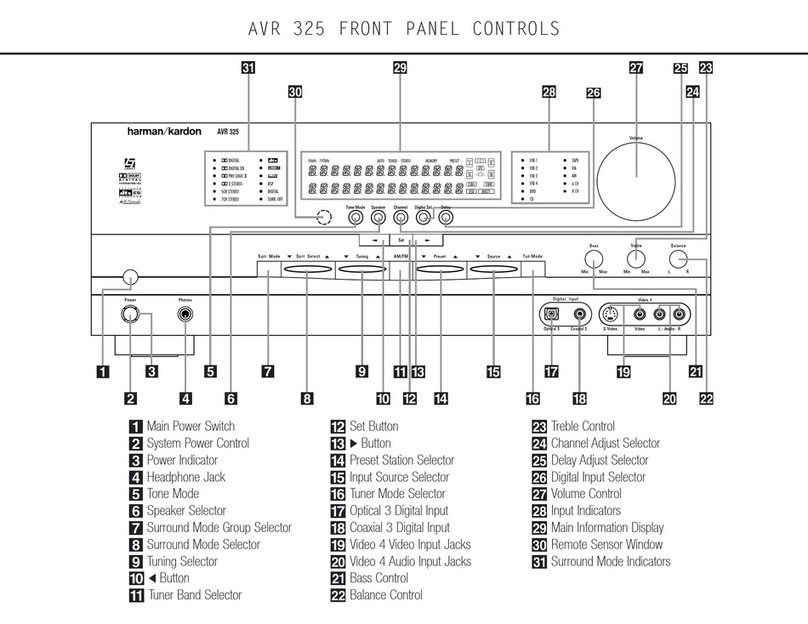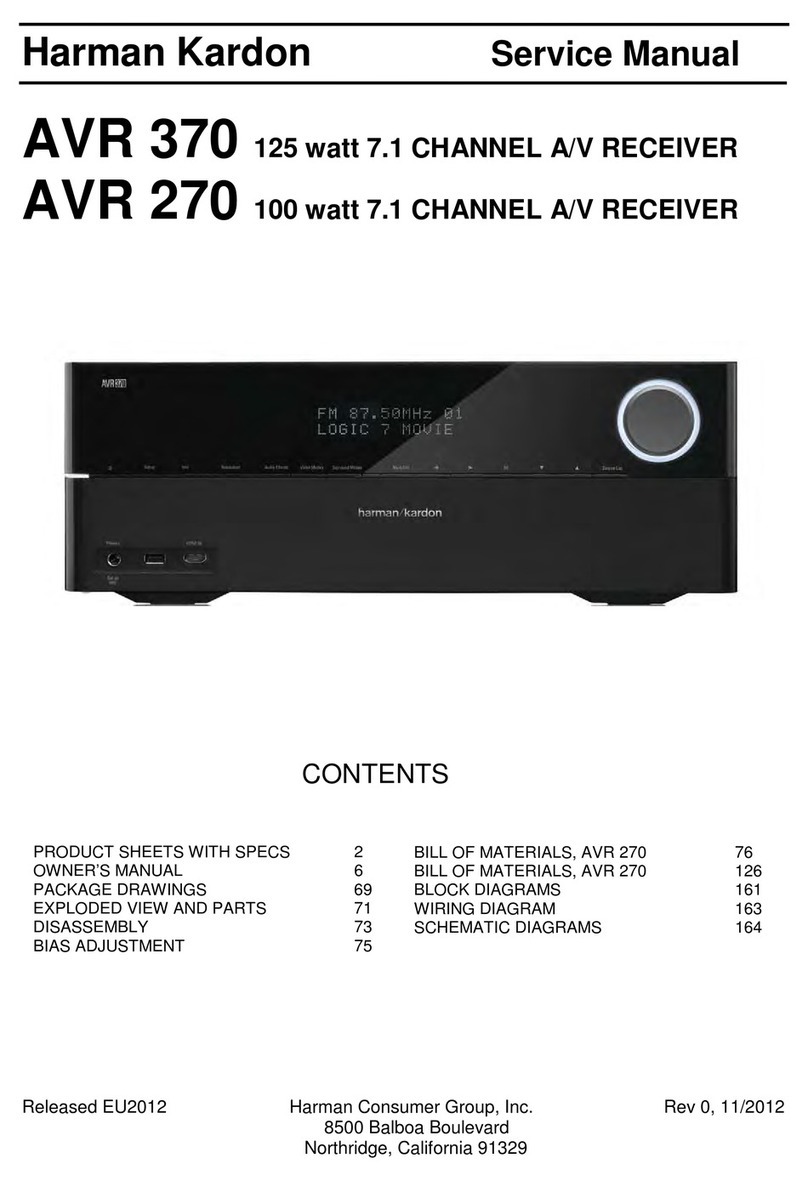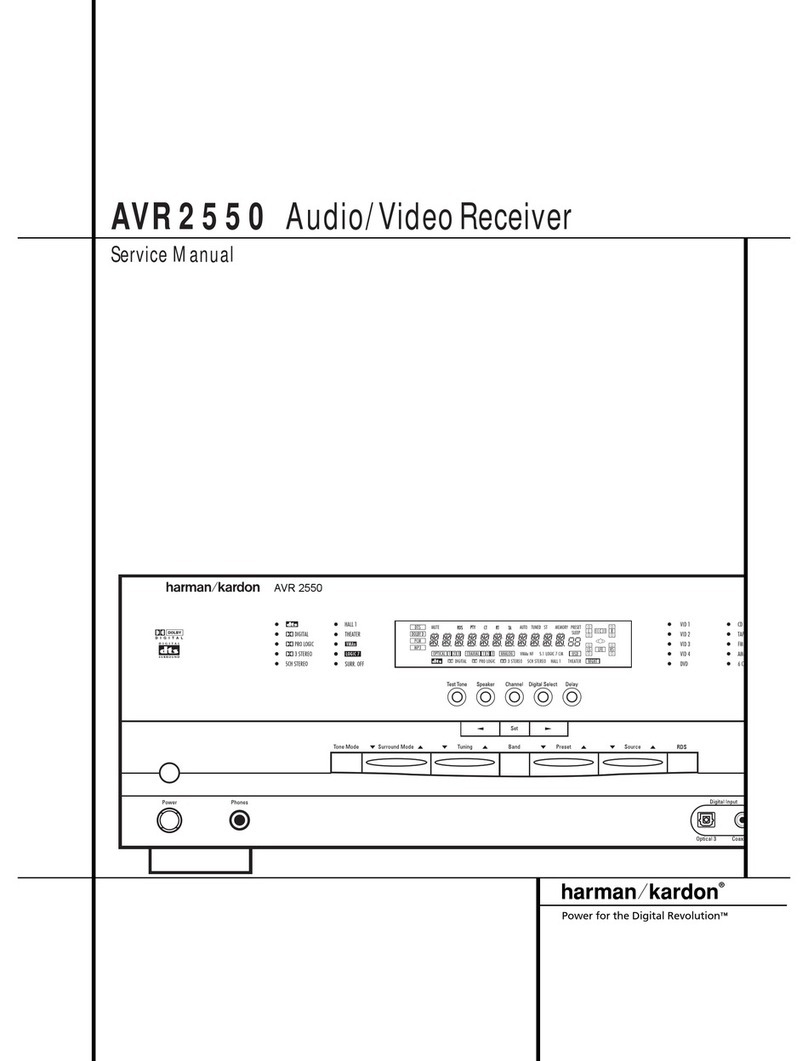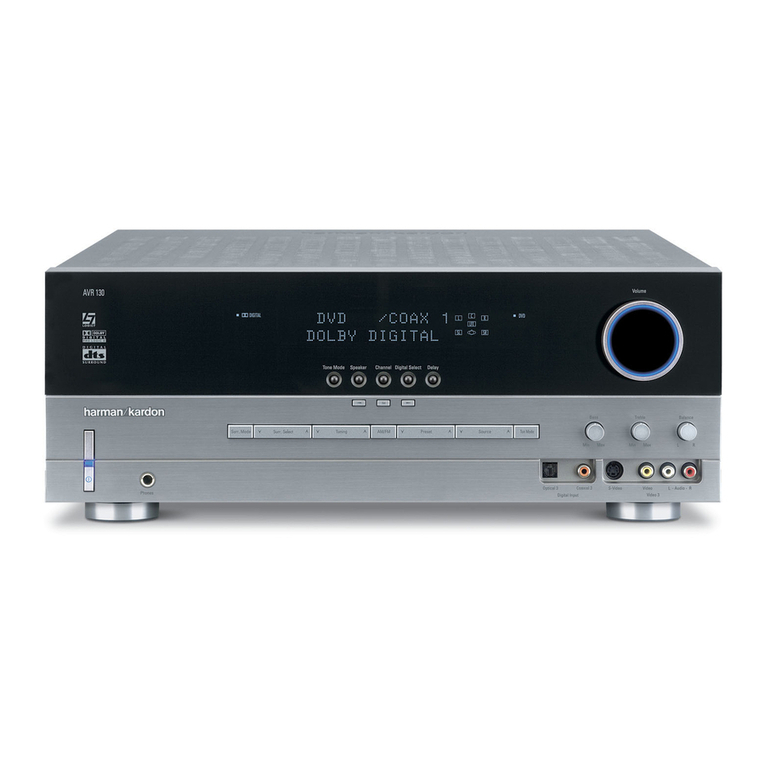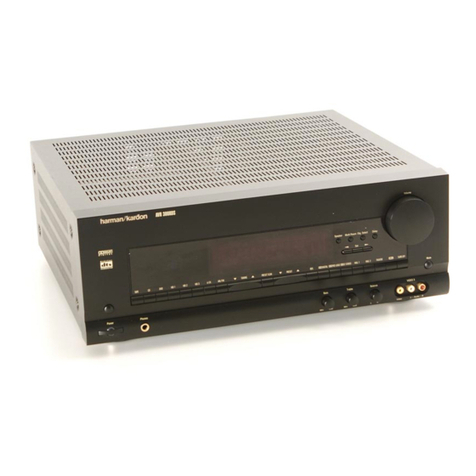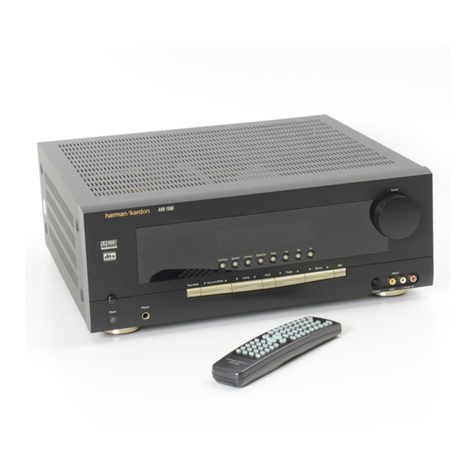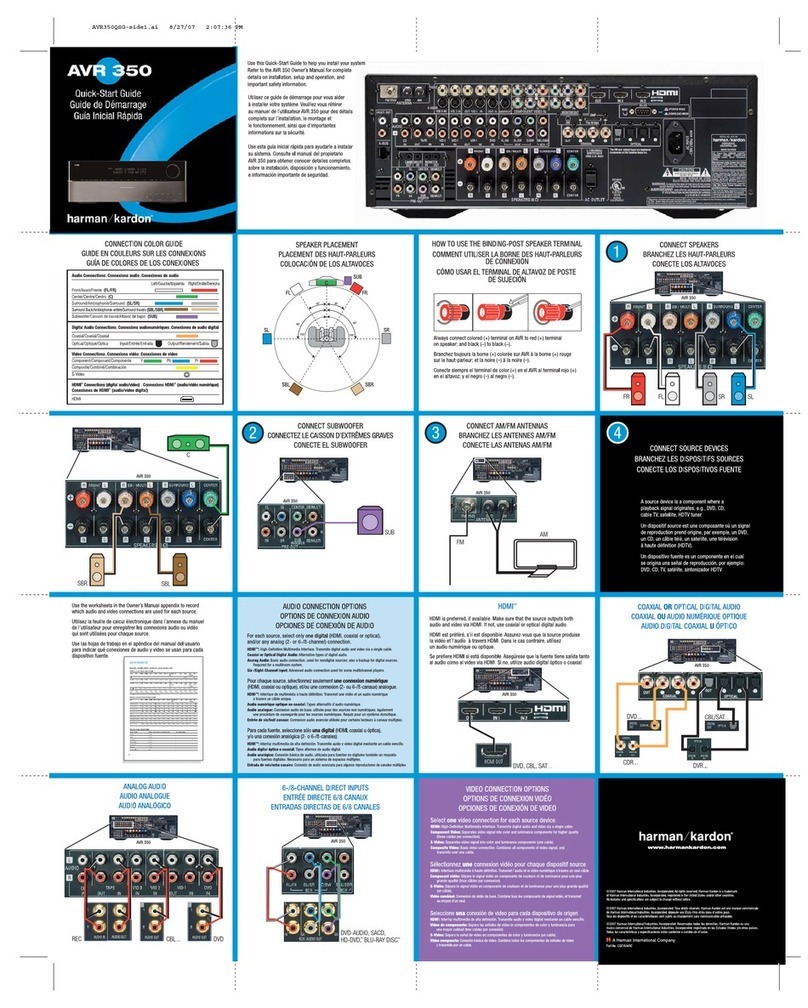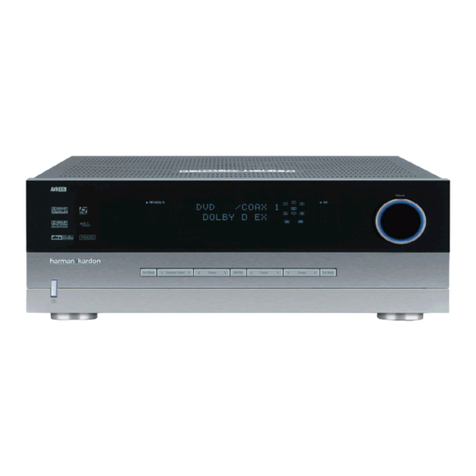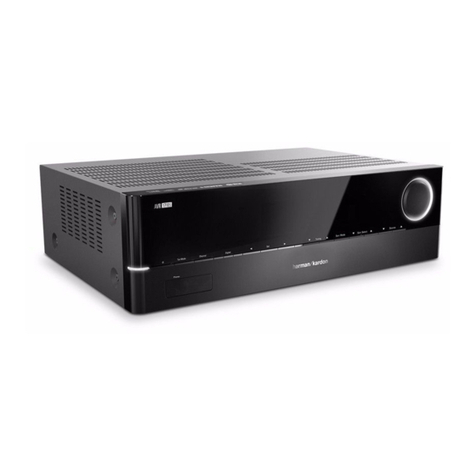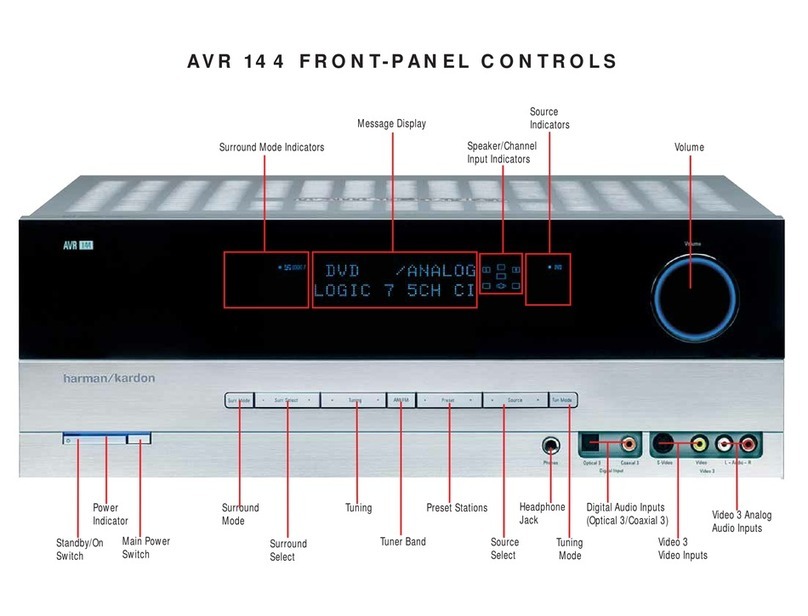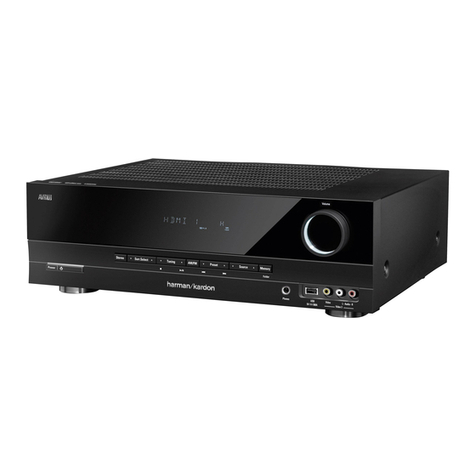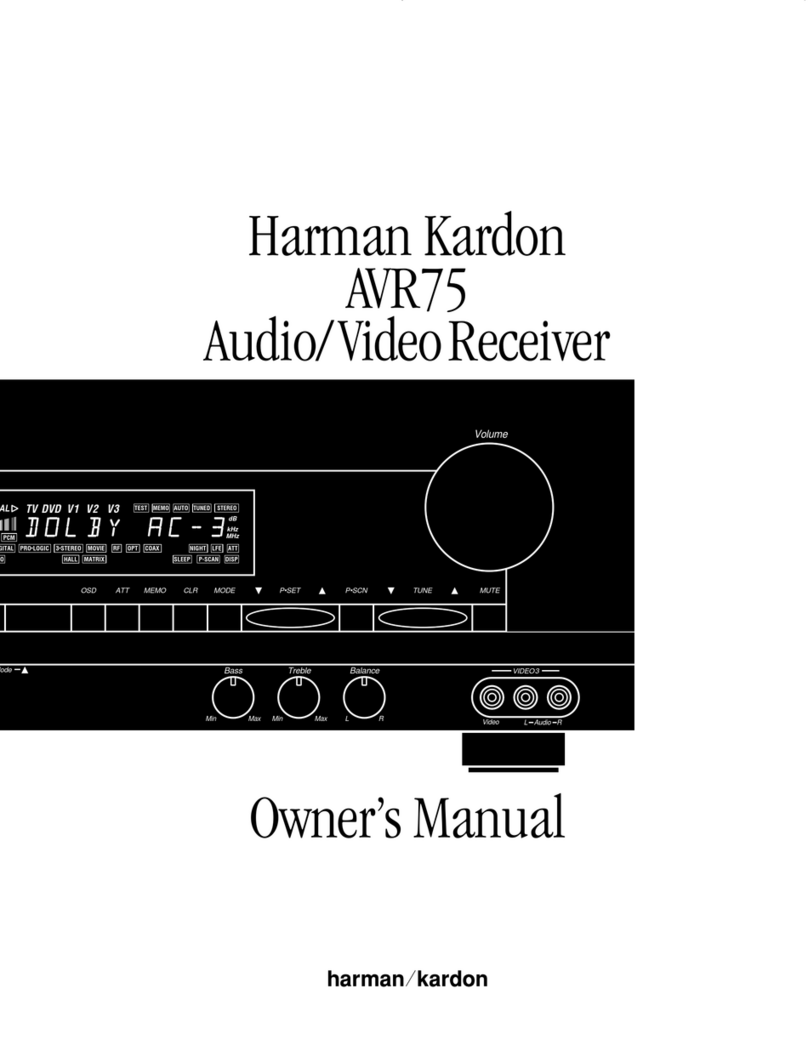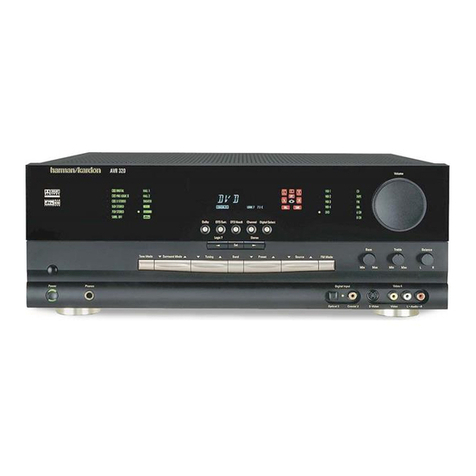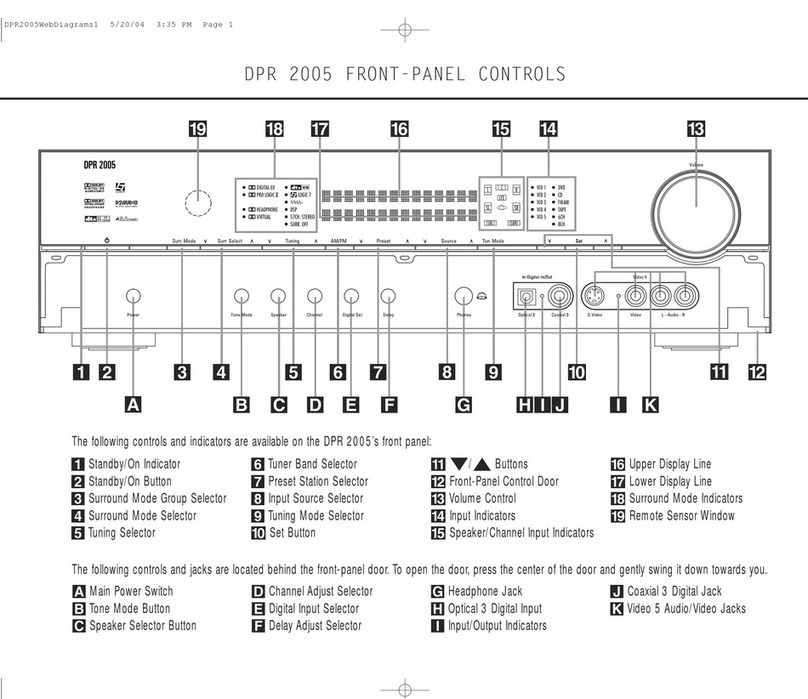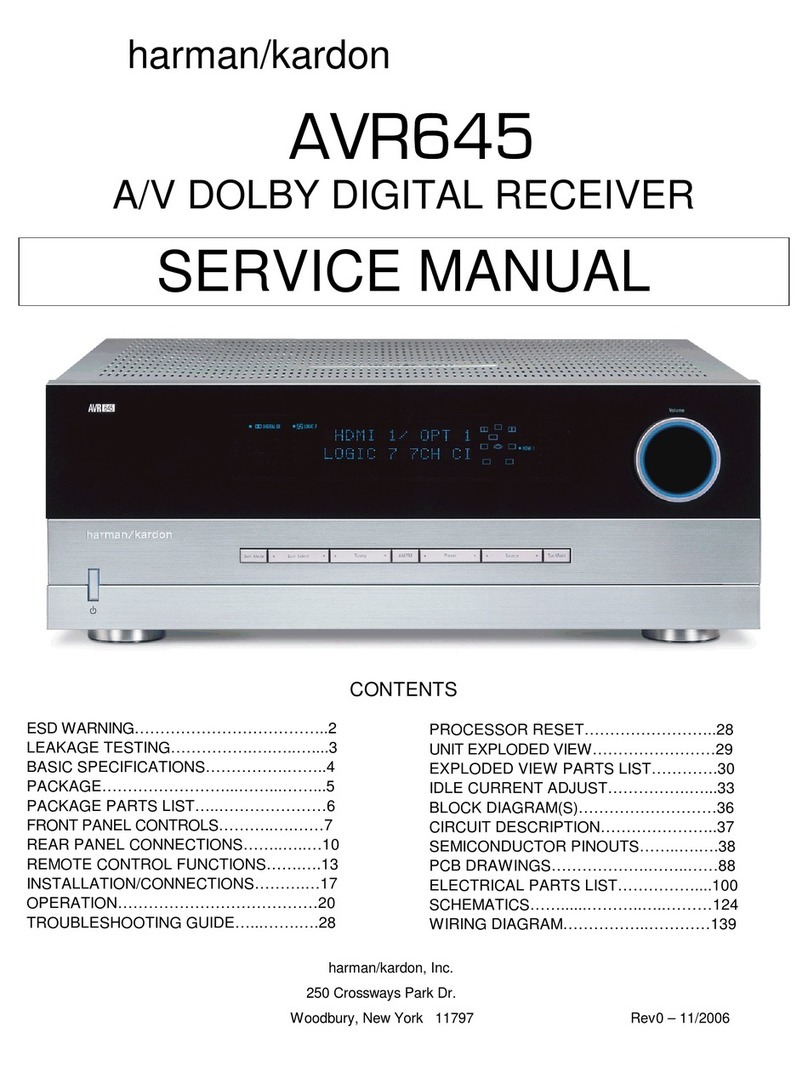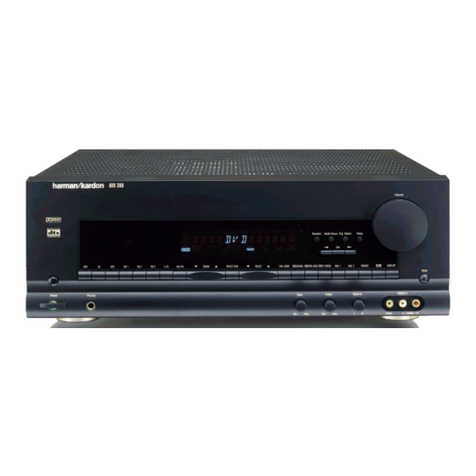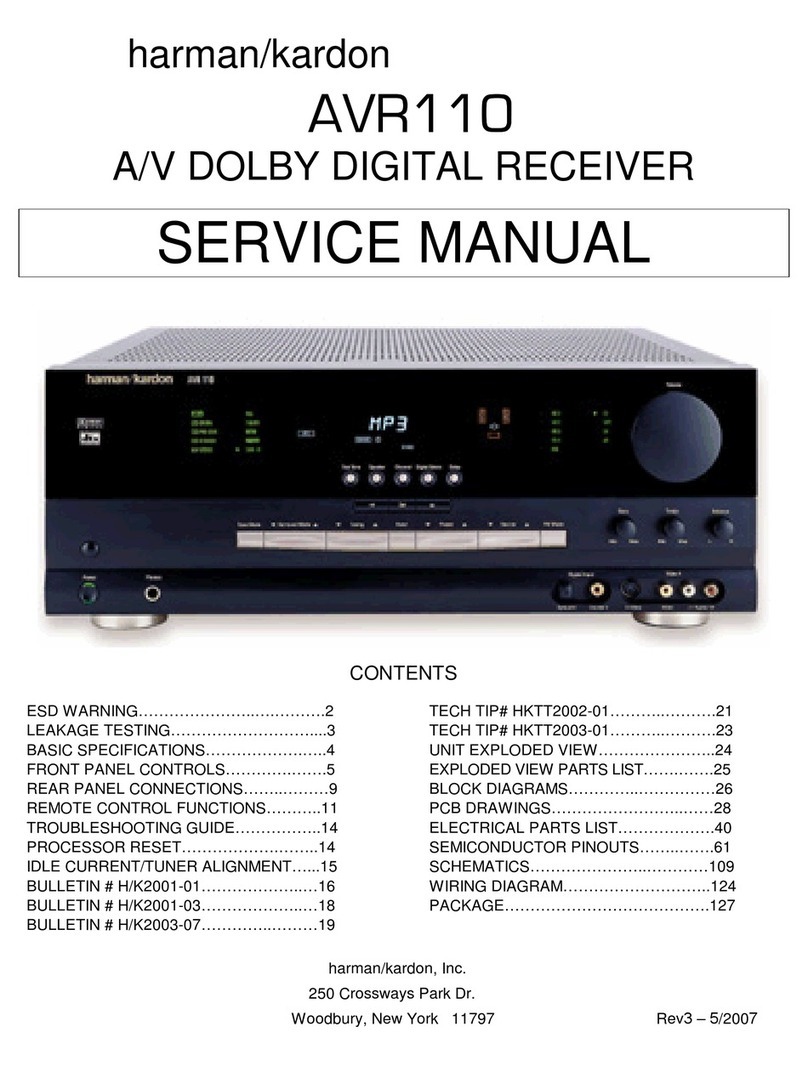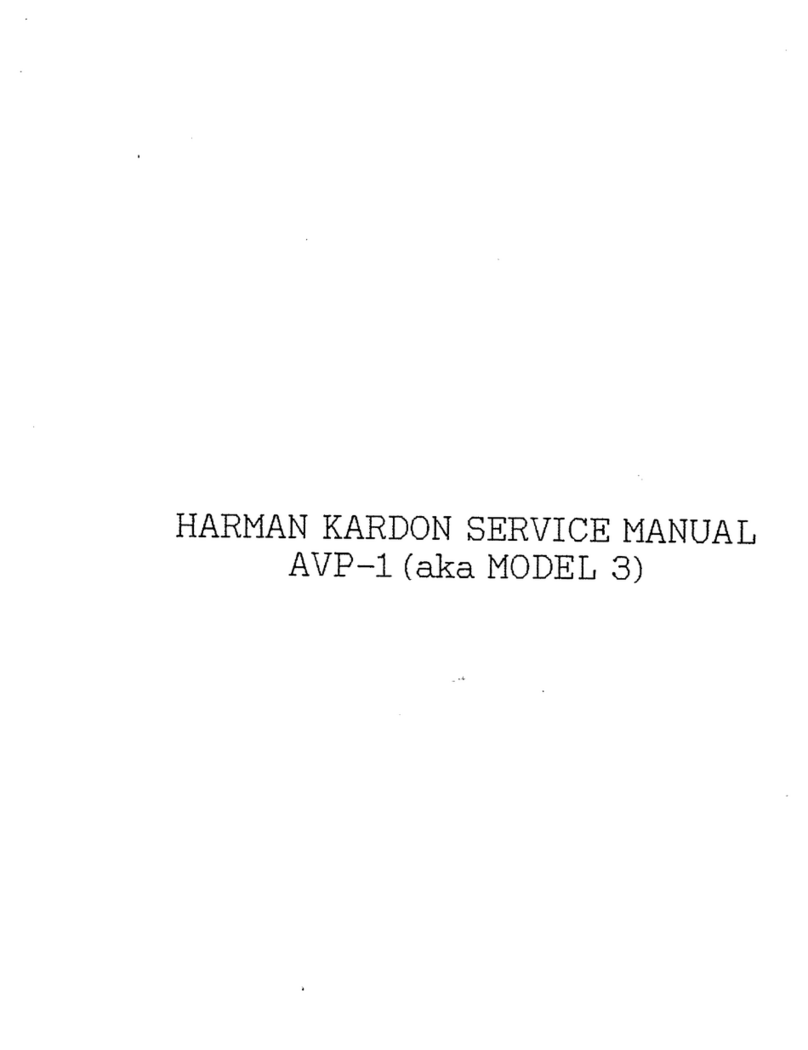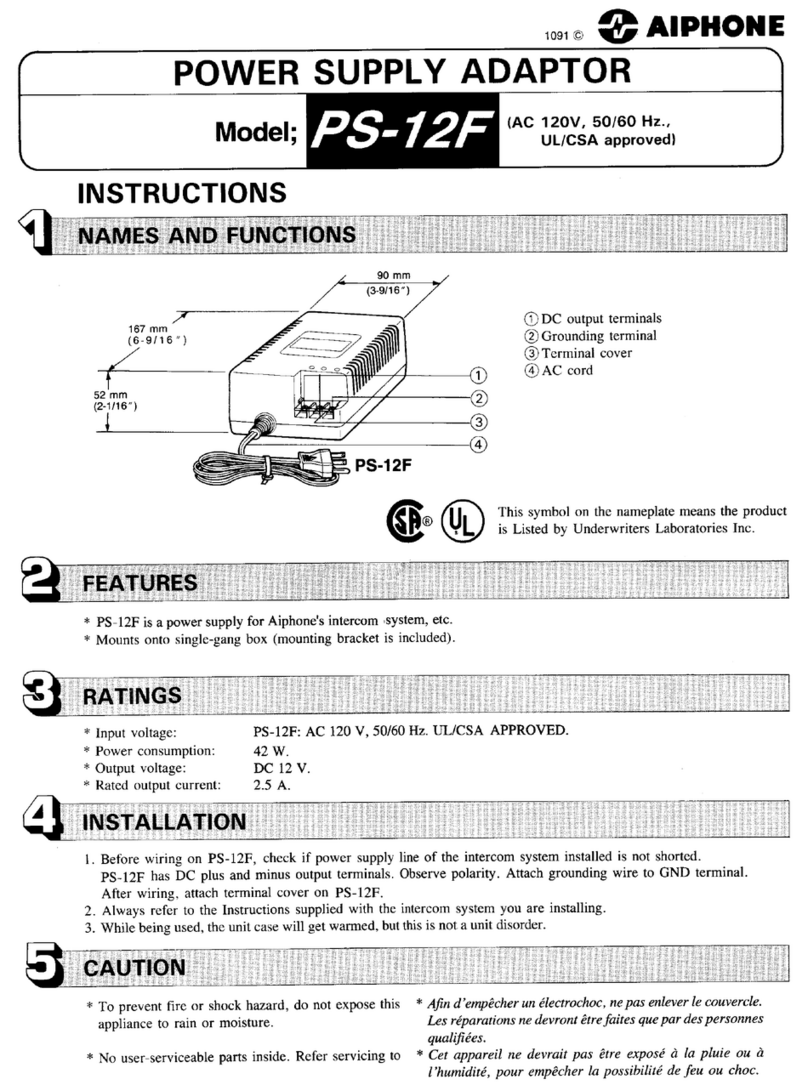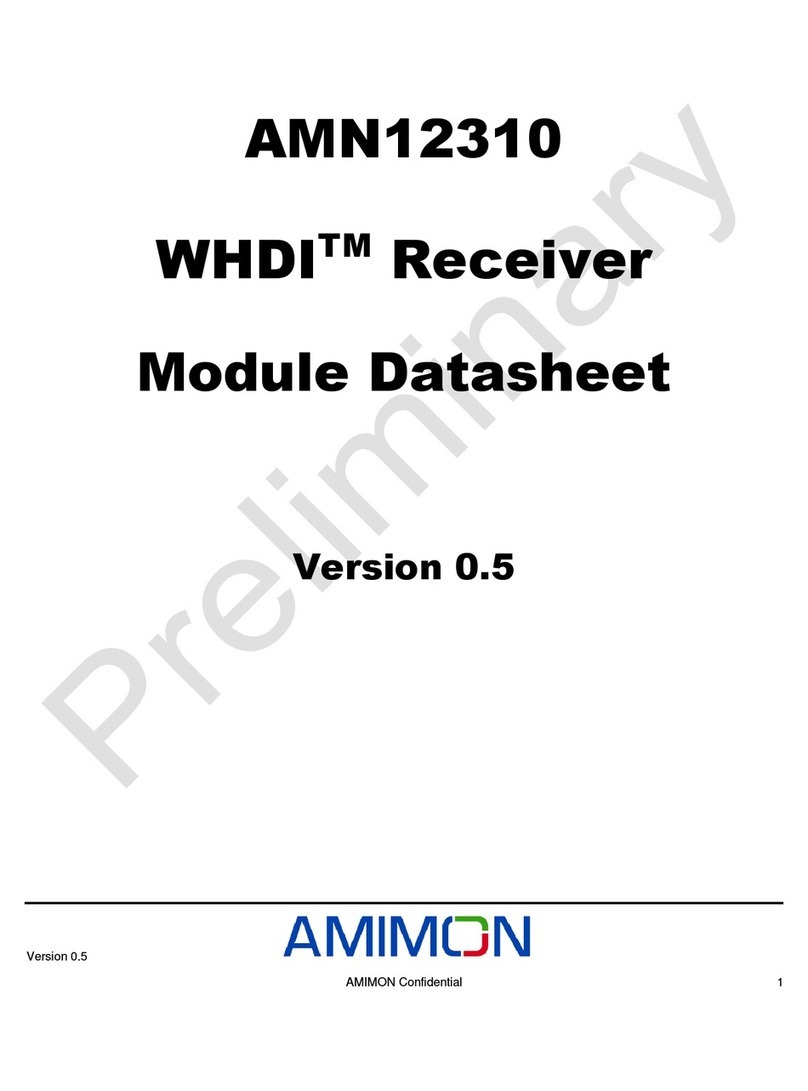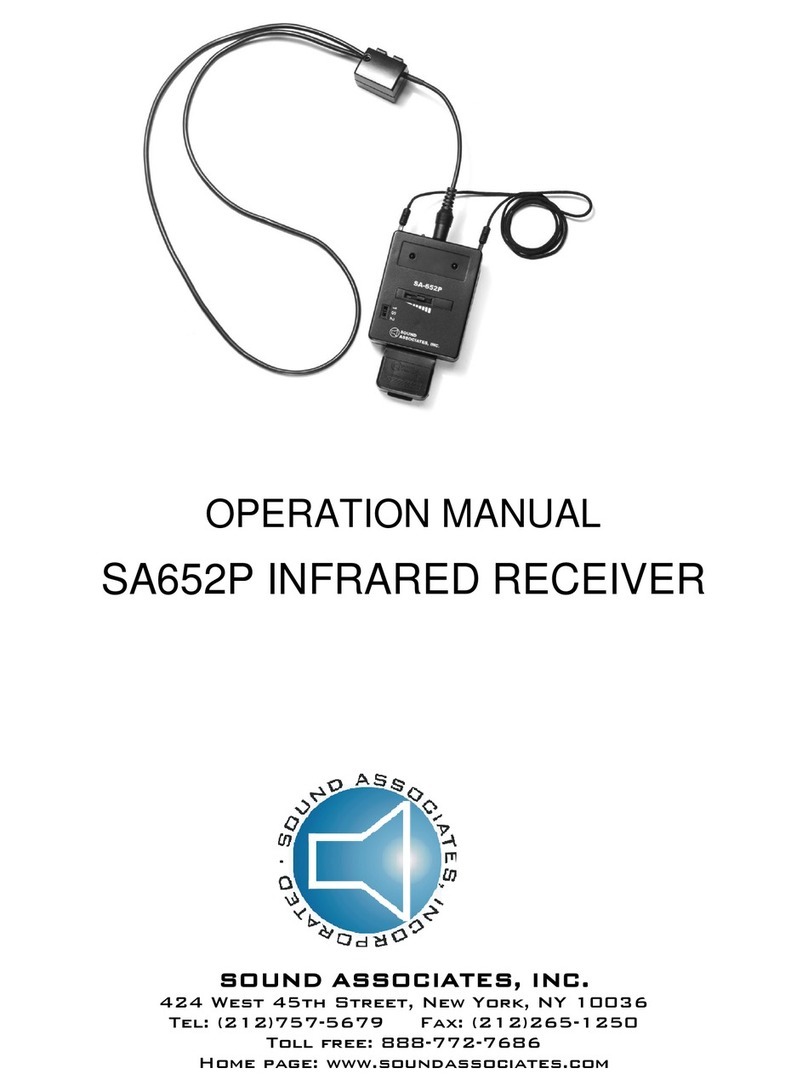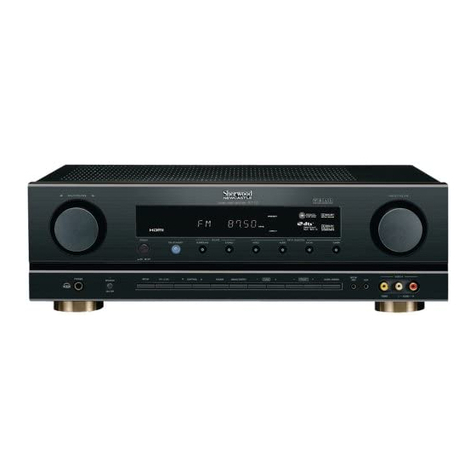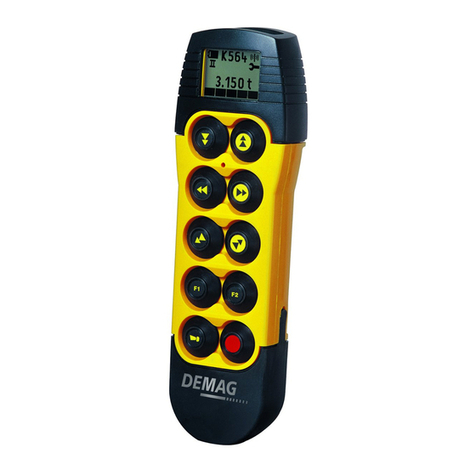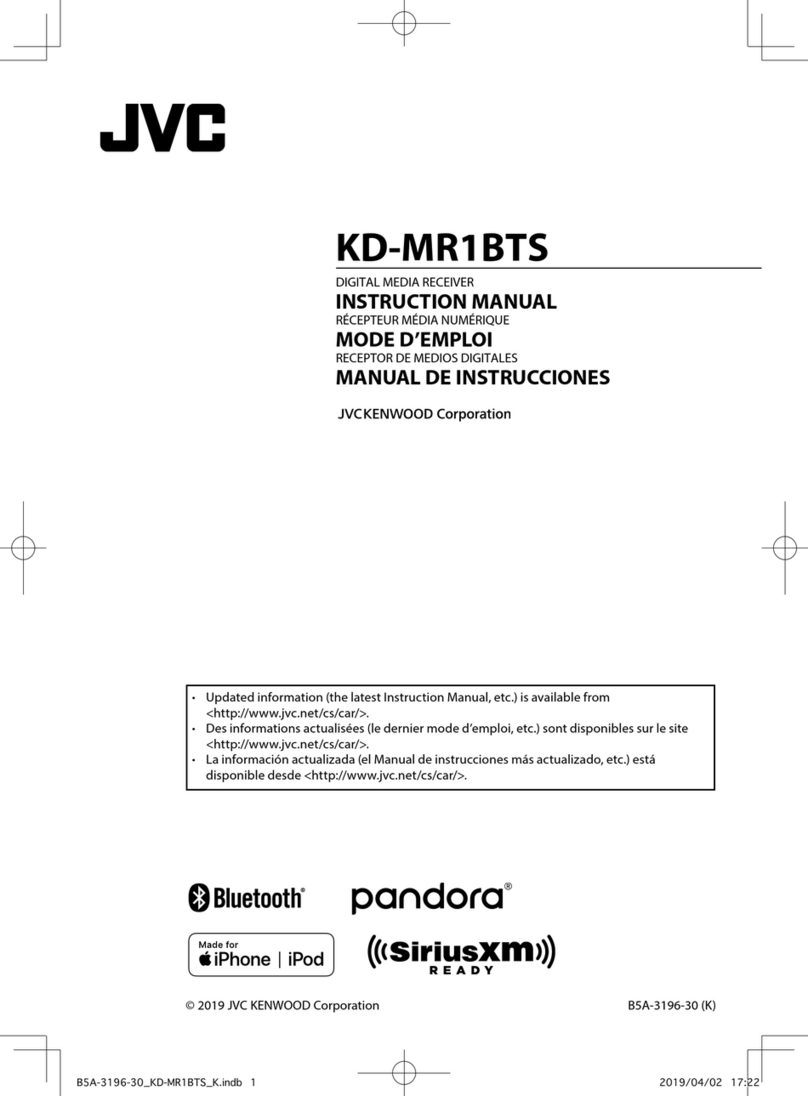58 FEBRUARY/MARCH 2004 SOUND & VISION www.soundandvisionmag.com
the option of diverting the back surround
speaker outputs to power remote stereo
speakers instead. What’s more, a basic re-
mote control for use in a second room is
supplied, giving you unusually complete
multiroom capabilities for a midprice A/V
receiver.
Up and running, the Harman Kardon
consistently impressed me sonically as a
very clean, dynamic receiver. And don’t let
the comparatively modest seven-channel
power ratings mislead you: 55 watts repre-
sents only 2.6 dB less potential dynamic
output than 100 watts. This was born out
by the AVR 330’s having no difficulty at all
in driving my modest-sensitivity speaker
array to movie-theater volumes with con-
vincing authority even on demanding pro-
gram material.
For example, in the very well-produced
DVD soundtrack of the hokey thriller K-
19: The Widowmaker,the receiver’s sur-
round processing delivered the famous ac-
tion sequences without a hitch. When the
submarine surfaces from under the polar
ice and launches a missile, I heard convinc-
ing impacts of rumbling, shattering ice and
head-snapping blast-off effects as the
ICBM comes more or less straight toward
you. Of course, finesse is equally important.
The 5.1-channel Super Audio CD mix of
James Taylor’s October Road requires plen-
ty of finesse, and the AVR 330 conveyed
the nuance and details evident throughout
the disc, especially the lovingly recorded
drum kit on the title track.
In addition to the now-common Dolby
Pro Logic II (DPL II) and DTS Neo:6 proc-
essing for enhanced 5.1/6.1-channel play-
back of two-channel sources like CDs and
Dolby Surround-encoded TV broadcasts
and older movies, the AVR 330 also incor-
porates Harman Kardon’s proprietary Log-
ic 7 mode for the same purpose. Harman
claims that Logic 7 is a quicker-steering
and more enveloping process than DPL II,
and I’m inclined to agree, at least with
some kinds of program material. I often
heard a more spacious, coherent surround
bubble on TV broadcasts, such as Monday
The AVR 330 convincingly delivered
all the impact of the effects in the
soundtrack of K-19: The Widowmaker.
key features
●Dolby Digital EX and DTS ES 6.1-channel
decoding
●Dolby Pro Logic II, DTS Neo:6, and Logic
7 processing for 5.1/6.1-channel playback
from two-channel or matrixed four-channel
sources
●Hall 1 and 2, Theater ambience-generation
surround modes
●VMAx two-speaker and headphone virtual
surround
●2 HDTV-compatible component-video
inputs, 1 output
●5 A/V inputs (1 on front panel), 2 outputs,
all with S-video
●3 optical, 3 coaxial digital audio inputs
(1 each on front panel); 1 optical and
1 coaxial output
●192-kHz/24-bit D/A converters on all
outputs
●Bass-management options include 6
crossover-frequency choices individually
assignable to front L/R, center, and
surround channels
●EzSet auto-level calibration using sound-
level sensor in remote control
●8-channel analog audio input, preamp out
●2 stereo audio-only inputs; 1 record output
●Multiway binding-post speaker terminals
for all channels; back surround outputs
can be redirected to power remote-room
stereo system
●8-component preprogrammed system
remote control with 5 (19-step) macros
●Multiroom capability with independent
source and volume; basic second-room
remote control
TEST REPORT
DOLBY DIGITAL PERFORMANCE
All data were obtained from various test DVDs
using 16-bit dithered test signals, which set
limits on measured distortion and noise
performance. Reference input level is –20
dBFS, and reference output is 1 watt into 8
ohms. Volume setting for reference level was
–8. All level trims were at zero; all speakers
were set to “large,” subwoofer on. All are worst-
case figures where applicable.
Output at clipping (1 kHz into 8/4 ohms)
1 channel driven.......95/148 W (19.8/21.7 dBW)
5 channels driven (8 ohms).....66 W (18.2 dBW)
Distortion at 1 watt (THD+N, 1 kHz)
8/4 ohms...........................................0.03/0.03%
Noise level (A-wtd)..............................–75.1 dB
Excess noise (with sine tone)
16-bit (EN16)..........................................+0.4 dB
Frequency response
20 Hz to 20 kHz +0, –0.3 dB
MULTICHANNEL PERFORMANCE,
ANALOG INPUT
Reference input and output level is 200 mV;
volume setting for reference output level was –6.
Distortion (THD+N, 1 kHz, 8 ohms)........0.04%
Noise level (A-wtd)..............................–85.4 dB
Frequency response
<10 Hz to 72 kHz +0, –1 dB (–3 dB at 156 kHz)
BASS-MANAGEMENT
PERFORMANCE
Measured results obtained with Dolby Digital
test signals.
Subwoofer-output frequency response
(crossover set to 80 Hz)
24 dB/octave above –6-dB rolloff point of 100 Hz
(–3 dB at 81 Hz)
High-pass-filter frequency response
(crossover set to 80 Hz)
12 dB/octave below –3-dB rolloff point of 81 Hz
Maximum unclipped subwoofer output
(trim at 0)...............................................9.2 volts
Subwoofer distortion (from 6-channel, 30-Hz,
0-dBFS signal; subwoofer trim set to 0)....0.08%
in the lab
Harman Kardon’s AVR 330 yielded several
star-quality test-bench results. Its stereo digital-
to-analog linearity was perfect, and noise was
very low in all cases, even nearing the magic
–100-dB point for 96-kHz/24-bit stereo signals
(stereo data are omitted above for space but
are available on our Web site). It also provided
unusually strong subwoofer output (more than 9
volts), so driving any powered sub with an
ample undistorted signal will be no problem.
The AVR 330 handily exceeded its rated all-
channels power with five channels driven and
was only a couple of watts shy of the 55 W x 5
spec even with all seven outputs active. When
driving multichannel 4-ohm loads with sine-tone
test signals, the receiver activated its protection
modes after about half a second if it was asked
to produce more than about 25 watts. Single-
channel performance was unaffected, and real-
world dynamic signals presented no problem
with these low-impedance loads.
Bass management was very consistent, with
no changes in crossover or rolloff slopes for
different inputs or media. However, no bass
management is provided for the multichannel
analog input — meaning none for DVD-Audio
discs or Super Audio CDs — and bass manage-
ment is defeated for any analog stereo source
when the DSP Surr. Off stereo mode is selected.
All channels can be set to “small,” and speaker-
distance compensation is available for all chan-
nels except subwoofer. — D.K.
